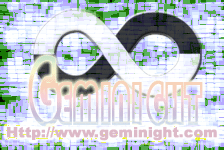DOOM 4™官方项目开发说明稿件:Production has begun on DOOM 4™, the next journey into the legendary DOOM universe. We are expanding our internal team and are currently hiring to work on this highly anticipated title.
"DOOM is part of the id Software DNA and demands the greatest talent and brightest minds in the industry to bring the next installment of our flagship franchise to Earth," said Todd Hollenshead, CEO, id Software. "It's critical for id Software to have the best creative minds in-house to develop games that meet the standards synonymous with our titles."
The DOOM franchise is one of the most recognizable and important in gaming history, having been named "one of the ten most influential games of the decade" by PC Gamer and "the #1 game of all time" by GameSpy. DOOM 4 will join the award-winning series which has consistently topped sales charts throughout the world.
We are looking for talented, ambitious and passionate individuals eager to join our accomplished team of developers working on the industry’s most innovative and anticipated games. For a complete listing of available positions, visit our id Careers page. Resumes can be submitted via email to
jobs@idsoftware.com. All applicants must be authorized to work in the United States.
© 2008 idsoftware.com
GPU Gems 3 是 nvidia公司的 GPU Gems系列的延续,其中大部分文章的作者都是Nvidia公司的,研究范围相等广泛,技术也相当不错,给出了当前GPU发展的最新技术,跟另一巨头AMD.ATI(好别扭)所出的ShaderX系列可以说代表了当前最先进的Real-Time渲染技术。记得前两本都是公司第一时间从亚马逊网站邮购回来的,这次不知道能不能先睹为快。nvidia公司在其网站给出了18、30、38章供下载。
OpenGL 3.0是OpenGL ARB组织今年的重头戏之一。于2007年8月8日正式发布,其specification还要经过协商讨论、正式定稿后,然后由Khronos Group组织进行为期30天的评估后,于9月底对外公开整个规范。其中,OpenGL、OpenGL|ES、GLSL都进行了相应的调整和升级。主要的改变有以下一些部分。
GLSL部分的改变包括:将attribute、varying关键词更改成in、out、inout;将单个的uniform变量组装成uniform buffer性质的common结构;内置固定管线的状态不再tracked;sampler2D数组使用image2DArray和filter来代替;预处理增加##和#include语句;OpenGLES增加了lowp、mediump、highp限定词;矩阵增加row_major限定词,允许使用行优先矩阵了;增加了switch语句。
将在结合CgFX的基础上,增加一个创建rendering eEffects的框架---glFX。其目的是为了更好、更容易的创建特效。glFX将支持OpenGL2.1、OpenGL3.0、OpenGL ES 2.0等。并对OpenGL3.0作出优化。
OpenGL3.0的改变包括:消除遗留的一些功能,如 过程式编程接口(Begin/End)、固定管线的T&L功能和纹理应用方法、客户端的顶点数组方式、选择模式、反馈模式、求值器、累计缓存等;全面转向对象模型,用于提高性能和共享灵活,基本上所有能成型的东东都叫Object的了。如:State Object、Data Oobject、Container Object、Vertex Array Object、Buffer Object、Shader Object、Program Environment object、Program Object、Texture Filter Object、Image Object、Format Object、Rasterization Object、Per-Sample Operations Object、Framebuffer Object、Save/Restore Object、Pack/Unpack Object、Sync/Query Object等。
